As preppers, many of us hunt and process our meat ourselves for a sense of accomplishment and security, among other reasons.
Your first hunt and kill might get sloppy when it comes time to process the meat. Most folks have no idea the mistakes they are making when processing animals.
It’s not as simple as having a sharp knife and cutting skills. Meat processing requires a lot of strength, precision, and knowledge to do it right.
Here are 11 meat processing mistakes you are probably making right now, and how to correct them.
Not Raising Livestock
While you may be a wild game hunter, it is a great idea to raise livestock on your homestead. There are endless reasons to keep your own animals, including:
- Constant food source
- Great for the environment
- Know where your food came from
- Teach children about animals and farming
- Animal bonding time
At the very minimum, you could feed the local wildlife such as rabbits and squirrels to keep them around your homestead.
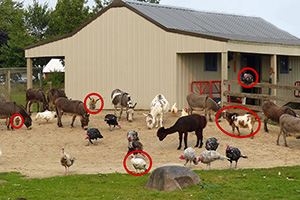
Hunting these little animals could mean your family can live to see their next meal in an emergency.
Keeping cows provides milk and meat. Keeping chickens provides eggs and meat. Keeping goats also provides milk and meat.
Any of these animals are great farm animals to keep on your homestead with proper care.
Discarding All Animal Fat
Humans need fat to survive. We cannot survive on lean meat alone because our bodies would still enter starvation mode after a while.
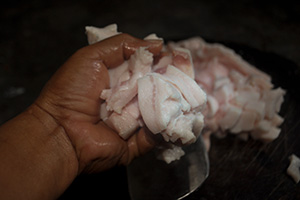
Animal fat from meat or freshly caught fish are necessities for survival.
When processing your animal, be sure to save the fat. It can be rendered down into lard for cooking oil, it can be added to soups or stews for extra richness, and it can be spread on toast in place of butter.
Related: How To Stockpile Lard, The Calorie Rich Survival Food Of The Great Depression
That extra fat might save you on a hungry night.
Discarding Undesirable Cuts
As preppers, we want to use every last bit of the animal we are processing.
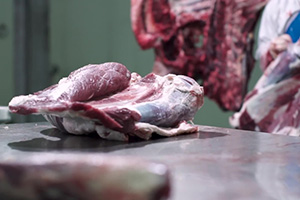
Being wasteful is harmful to the homestead, so utilize every last bit of the animal that you can. This means bones, organs, tough cuts, even feet!
Every part of the animal can be utilized for something, it just takes a little planning and ingenuity.
It also takes some trial and error, so if you are just beginning with meat processing, give yourself some time. Just remember that the entire animal can always be used for something or another.
Dull Knives
You not only need one sharp knife for processing, but you need an entire set of razor-sharp knives!
Dull knives will get you nowhere and can be pretty dangerous. Dull knives can slip around joints and hard-to-cut areas, leading to potential knife injuries.
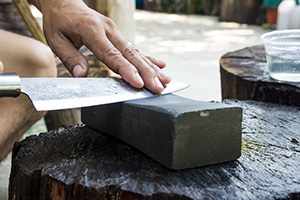
Instead, be sure to buy high-quality knives that can last for years. Also, invest in a quality knife sharpener to make sure your blades never lose their luster.
Sharp blades will process meat more quickly and safely than low-quality knives.
Related: How to Make Your Knife as Sharp as the Devil Himself
Not Keeping Usable Organs
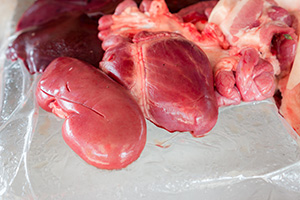 As stated before, most of every animal is used for something. This includes organs, too! If you don’t want to eat organs yourself, this can be a great meal for your dog. Cook them up without seasoning and fresh organ meat can be the perfect meal for your canine companion.
As stated before, most of every animal is used for something. This includes organs, too! If you don’t want to eat organs yourself, this can be a great meal for your dog. Cook them up without seasoning and fresh organ meat can be the perfect meal for your canine companion.
Organs can also flavor many dishes for humans. For example, liver meat is delicious when cooked and pureed into a meat gravy.
You can also add hearts and giblets to bread stuffing or casseroles. Organs provide tons of nutrients that you may otherwise miss out on.
No Method for Hanging or Processing
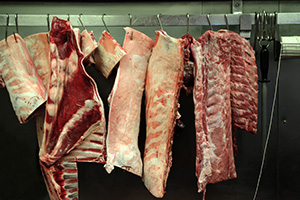 Let’s be real; many hunted animals are huge. You need a place to hang and store the meat until it is ready for processing.
Let’s be real; many hunted animals are huge. You need a place to hang and store the meat until it is ready for processing.
The location cannot be just anywhere, though, in fear of bugs, predators, or bacteria.
You need a location on your homestead in which to hang and process your animals in a sanitary manner.
Related: Be Aware Of This When You Smoke Your Meat!
No Proper Tools
Aside from a very sharp, diverse knife set, you may need some extra tools for meat processing.
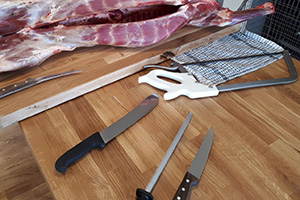
Depending on the animals you are working with, you may need a bone saw or electric fillet knife to make your job easy and seamless.
Without equipping yourself with proper tools, your meat processing may not be as clean or tidy.
You need tools for skinning, breaking down tendons and cartilage, and cutting through bone.
Larger animals will require more heavy-duty tools. Tools may depend on the region in which you live; black bear territories may require some super heavy-duty tools
Not Diversifying Your Animal Repertoire
You may be limited to the animals in your region of living, which is understandable.
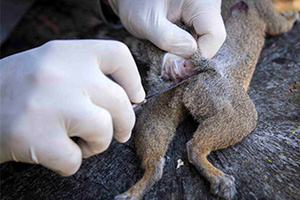
Once you are comfortable processing squirrels, that doesn’t mean you are ready to move on to hunting black bears.
Once you are comfortable, however, processing many different types of animals will become like second nature. It’s best to start small and move up on the food chain.
Related: How To Prepare And Field Dress Wild Game
If you are keeping livestock, diversify your processing between cows, goats, chickens, ducks, turkeys, rabbits, or whatever other animals you keep. The only way to learn is by experience.
Discarding Bones
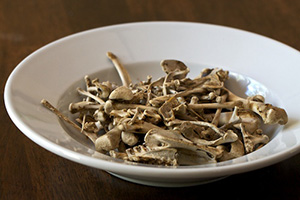 Bones are the backbone (pun intended) of soups, stews, and broth.
Bones are the backbone (pun intended) of soups, stews, and broth.
Bone broth has a ton of nutrients and is commonly drank by celebrities for optimal nutrition. Make your own bone broth from the many extra bones from meat processing.
If you are processing cattle, you can utilize the bones for the marrow. Bone marrow is a delicacy commonly served with toasted bread.
Simply roast the marrow bones until the middle is melty, fatty, and delicious. Who knew you could be eating like a king on your homestead?
Unsanitary Cleaning Practices
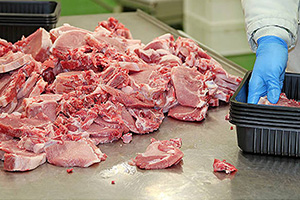 Wash the animal thoroughly once it is skinned and deboned. You want to take every step possible to ensure the meat you are processing will make it to your dinner table. This means a clean workstation, clean equipment, and plenty of storage for the weeks of meals to come.
Wash the animal thoroughly once it is skinned and deboned. You want to take every step possible to ensure the meat you are processing will make it to your dinner table. This means a clean workstation, clean equipment, and plenty of storage for the weeks of meals to come.
Without all of these necessities, your meat could spoil before it even makes it to the skillet.
Related: The Ultimate Meat Processing Charts for Preppers
Not Discarding Diseased Organs or Animals
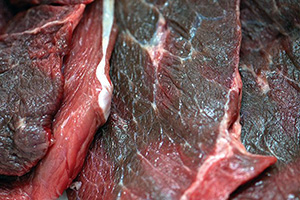 It is really important to know when to not move forward with processing. If you have caught a wild rabbit, you may open it up to find it has a white-spotted liver.
It is really important to know when to not move forward with processing. If you have caught a wild rabbit, you may open it up to find it has a white-spotted liver.
Disease in an animal is usually apparent from the moment processing begins. It’s important to know when you eat them and when to toss them.
Eating diseased meat can cause some pretty adverse effects in humans, including abdominal pain, bloating, diarrhea, vomiting, dehydration, and in severe cases, death.
If you notice a strange color or pattern when processing an animal, use your best judgment on the next steps.
Final Words
Processing your meat from hunting or livestock is a self-sufficient way of feeding your family during a survival or off-the-grid situation.
The more you process, the more comfortable you get with the knife. Follow these simple cautionary mistakes to save yourself from wasting meals down the road.
Providing food with your bare hands will never get old, and processing your meat is the cherry on top of being a sufficient homesteader.
You may also like:
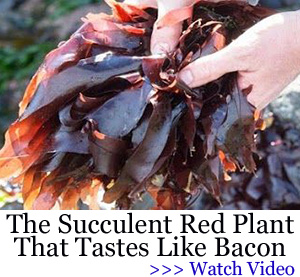 Midwest Farming After The Floods: “FEMA Is Worthless”
Midwest Farming After The Floods: “FEMA Is Worthless”
How to Keep a Slaughtered Animal From Spoiling by Eating it in the Right Order (Video)
26 Necessary Tools for Off-Grid Living

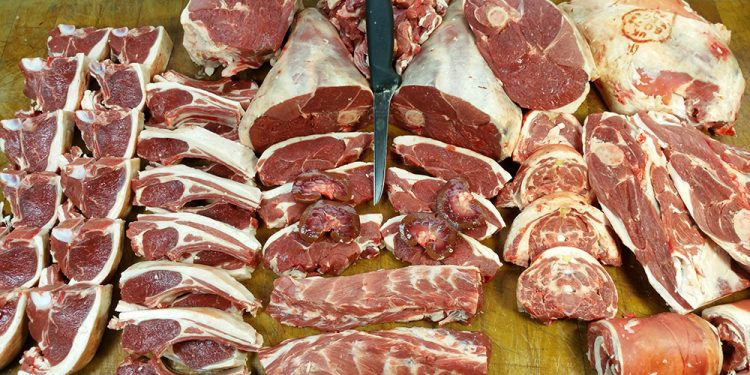




















Very good Info to know. Nice article.
Not much into the organs, will use that part for the dogs food.
When thru with the bone. Crush them up and put in the Garden.
Will we ever use this type of info, Yes or No. Remember better to know it and not need it then to need it and not know it. so better learn all you can, because you will be more valuable to the Community and most of all your Family.
Good luck in these days, that are to come.
“Pureed liver meat gravy”
You lost me right here. Barf!
If you ever end up as starving as they are in Venezuela, eating bark off the trees yet still wasting away due to starvation and lack of calories, I suspect pureed liver gravy will sound delicious. A liver from a home grown animal can be a very nutritious, vitamin packed meal. We Americans tend to throw away much in the way of organs and usable meat, but there is much worth in calories and nutrition in other parts of the animal. I just butchered a young bull that got a broken leg, and I must have gotten 20 lbs of meat off the head alone, aside from the 3 pound tongue. And some Mexican neighbors just helped me castrate two grown goats and two 200 pound hogs. I’m saving about 6 pounds of testicles, soaking in brine and lemon juice, for customers who view this as a delicacy. A Texas rancher who helped me castrate some 280 pound hogs makes a testicle taco that folks love, at least until they find out what the protein source was.
They used to call them prairie oysters here lol
It would be a good idea to have a large on-hand stock of various sizes of game / meat bags to help keep dirt, hair/fur/feathers, insects, and any airborne contaminants off the surface of your meat, especially for when transporting and also if/when hanging to “age” or store. This works for wild game so should also work for livestock. Please remember to wash and sanitize your meat bags thoroughly before reuse.
I also am not fond of eating the organs and would save them for feeding the dogs, boiled with a maybe a dash of salt, or maybe to feed to pigs if we ever have any.
Are you familiar with the thyroid. I’ve had thyroid cancer and buy a dessicated beef thyroid. I’m considering harvesting the thyroid from our next cow and putting it in our freeze dryer.
“If you notice a strange color or pattern when processing an animal, use your best judgment on the next steps.”
Some suggestions as to what various steps one might take upon noticing strange colors or patterns in the meat would be very helpful.
Is diseased meat suitable for meat-eating animals, such as dogs or cats?
Should such meat be thoroughly burned rather than buried?
Are there instances where such meat is edible by humans?
Can the bones be left out to be cleaned by insects and then pulverized for fertilizer or do some diseases remain dormant in the bones and those are useless and should be burned as thoroughly as possible?
Some us know that deer and elk are subject to chronic wasting disease which is related to mad cow disease and is reputably easily transmittable to humans. Officials with various governmental agencies recommend not eating any parts of the animal adjacent to the head or spine and using protective gear when dressing such animals. Presently they want to receive the parts mentioned. Each agency has different criteria for handling such animals. If you are hunting in an area known for CWD, it is best to check with the fish and game department of that locale to see how they advise handling diseased animals.
In an EOTW situation, were I to harvest a deer that exhibited signs of CWD, depending upon my food situation, I think that I would burn the carcass and not take a chance on acquiring spongiform encephalitis. With medical care minimal or non-existent, one must be careful about exposure to disease entities. A real Hobson’s choice, starve or contract mad cow disease. What is behind door number three?
It will be very interesting to see how others think they would address the dilemma.
Any off smells, greenish tinge around bone joints especially the hip, spine. Meat without bone can start going green on the surface, but this can sometimes be cut off and the meat underneath might be fine. Not my cup of tea but we are talking about EOTW or starvation times. USe your nose, it is one of your best assetswhen it comes to food spoilage.
Avoid bruised areas by cutting them out and discarding/feed to pets. Animals fight so bruising can be present in farmed and wild stock.
Heart in a cow is just muscle meat. Wash out blood clots and stuff like poultry and roast , it tastes delish. Tongue and cheeks can be boiled/pressure cooked with bay leaf n spices, then peel off the mouth layer. If you add qwikcure or similar to the cooking water it tastes like corned meat but don’t use the water for soups after. Liver is always soaked in cold salty water to cool it fast and drain most of the blood out. Then sliced, coat with flour and cooked, served with onion n bacon in gravy. Kidneys go in with the liver to cool fast but make sure to free them as fast as possible from the fatty surrounding first. Cook as with the liver. Sweetbreads and runners (small intestines after thoroughly rinsing) the same. Cook all these meats the same day as killed. Unless you have refrigerator or it’s really cold discard anything not cooked that day.
Just what I’ve found works in our hot climate with no power.
You never want to keep deer, elk or pronghorn fat, or talo, it’s not like Bear or pig fat, it leaves a greasy coating in your mouth when trying to eat and will go rancid in a freezer so trim all talo off your meat before freezing. Cranes, Bears, Wild pigs, ducks, all can be used to harvest useable fat.
That said, the bear population presently has a serious infestation with trichinosis and must be thoroughly cooked before eating. Interestingly enough, domestic dogs and presumably in an EOTW situation, feral dogs also have a trend toward trichinosis infestation, so if Fido is on the menu after the world ends, be sure to cook him thoroughly otherwise he will get his revenge for being on the menu.
In Field and Stream magazine I read an article about a hunting party in Canada that had strayed too far from their base camp and were disoriented to the extent that they spent more days in the field than they had rations for. They managed to kill a bear and couldn’t wait for it to be thoroughly cooked and ate it rare, resulting in the entire party being infested with that parasite. The author of the article said the meat was delicious although he regretted not waiting until it was well done. It is my understanding that one never completely rids oneself of the parasite, it merely goes dormant to periodically reactivate resulting in the host once again exhibiting the symptoms of infestation. Another alligator in the swamp of survivalism. Well done is much safer than the way many of us like to eat our meat.
Son of a gun, Chuck. I thought that trichinosis was only in pork. Good to know that it’s also in bears. Don’t know how much luck I’ll ever have killing a bear. I don’t really ever want to be in that situation. If I was serious about going after bears I’d have to seriously upgrade my weapons. For a bear I would favour a .308. I’ve seen the paws on a grizzly. OMG! Probably never have to worry about it anyways. As for feral dogs I would have to be VERY hungry to even consider eating fido. As far as I know I have no Chinese relatives. 😉 At this stage of my life I have no choice but to bug in. For better or worse this is where I have to make my stand. I’ve done my best to prepare as best I can on a limited budget. My priorities are food and water. At the moment I don’t care about getting things from places like Home Depot or the like. As long as they keep the water and electricity going I’m good for quite a while. If the electricity does go out for short periods in the winter I have back up plans to keep the house warm. Tea lights and a big clay pot. LOL! The meals would probably get “boring” but boring is better than starving. I don’t know how the situation is down in your neck of the woods, Chuck, but up here in the land of ice and snow I’m starting to see prices starting to spike upwards although the shelves are still pretty well full. More or less. I know the situation is starting to get pretty dire in the US. I’ve heard rumours of shop lifting escalating in places like New York and San Francisco. Empty shelves appearing more and more. Inflation ramping up. Panic buying and on and on. And still there are over a million containers waiting to be unloaded. I’m not worried for myself but for those that haven’t prepared. I don’t want them turning up at my door or throwing a Molotov cocktail at the house. There are a great number of people just a days walk south of me.
Hey Armin, the black bear is the one you want to eat, tasty, and it won’t eat you first. They’re just big ol’ dogs, you can take one with .223 no problem.
I had heard that. Bear are part of the pig family so maybe that is why trichinosis?
Peace
MadFab
Don’t store pork w/huckleberries or blue berries in the freezer as all will squire an off taste.
The taste of tallow on the back of your tongue can also be a case of not growing up with a particular type of protein. Young goat is delish when hot but leaves a bad taste in my throat. Mother refused mutton and lamb so I didn’t eat it as a child….as an adult the greasy taste/sensation in the throat is awful.
Once, a very long time ago, an adventure down the Yukon River in AK reduced us to eating muskrat. It’s a rat. It doesn’t matter how hungry you are, somethings just don’t pass the smell test.
The ick factor is not the same as the smell test, grandma used to mix calf brains in scrambled eggs. Fresh salmon or trout eggs are delicious, as was the calf brains and eggs The difference of +50 years made a huge difference.
If you don’t like organ meat by itself some of it can be processed with any ground meat that you make. Organ meat is the food that cats like and is very good for them. I have most of the tools needed to process a cow or anything smaller. I specialize some of my knives by the way they are sharpened. One or two will be heavier than others and be sharpened at a more obtuse angle so as to be better for separating joints (seldom use a saw) or scraping without breaking the knife or turning the edge on the bones. Most of the rest are for cutting flesh with a more acute angle.
Wursts and sausages are a great way to use up odd cuts. In the EU they have been doing that for centuries. A specialty that yields some real tasty stuff too! Then again, that would be the title of a whole other article. Hint. Hint.
City Chick,
Yes a GOOD article about sausage making would be excellent. I’m not sure what Claudes parameters for length iS, but there are some really good books out that show step by step instructions.
We make sausages and wurst from beef pork and poultry.
One of the best tips I was taught was that everything must be kept cold/ frozen. As ya grind the meat it heats up, then the fats gets melty( yes that is a technical term! Lol). That makes the sausage not good and hard to work with.
Had an uncle that could stuff casings( pork/ lamb intestines) with just one hand!! No stuffer needed. Really impressive.
I am just a novice sausage maker, meat curer, so I don’t have all the knowledge, but I male some pretty good sausages, thuringers, salami.
The only things ya need to start is a recipe, some pink salt( if curing) and meat grinder and stuffer. All can be bought on the big A!
Give it a try.
Peace
MadFab
MadFab
Any suggestions on the books you speak of?
Blood sausage anyone?
As a follow-along to at least some of the questions I raised, I went on line to do a little checking on CWD. The following is taken from the U.S. government’s CDC website. While I realize that the CDC has shown us that it is too politically infested to take all of its pronouncements as coming from on high on the Mount, what I have pasted below appears, at least to me, to be free of political bias.
“Prevention
“If CWD could spread to people, it would most likely be through eating of infected deer and elk. In a 2006-2007 CDC survey, external of U.S. residents, nearly 20 percent of those surveyed said they had hunted deer or elk and more than two-thirds said they had eaten venison or elk meat. However, to date, there is no strong evidence for the occurrence of CWD in people, and it is not known if people can get infected with CWD prions.”
In another portion I did not copy, there was evidence that CWD could be spread to a particular monkey related to humans from eating CWD infected meat as well as mice that contained human genes.(Shades of the horror movie, Invasion of the Humanoid Rats). There is also some evidence in a study not yet vetted that showed that CWD can likewise be transmitted to macaques, a monkey most closely related to humans.
“Hunters must consider many factors when determining whether to eat meat from deer and elk harvested from areas with CWD, including the level of risk they are willing to accept. Hunters harvesting wild deer and elk from areas with reported CWD should check state wildlife and public health guidance to see whether testing of animals is recommended or required in a given state or region. In areas where CWD is known to be present, CDC recommends that hunters strongly consider having those animals tested before eating the meat.
“Tests for CWD are monitoring tools that some state wildlife officials use to look at the rates of CWD in certain animal populations. Testing may not be available in every state, and states may use these tests in different ways. A negative test result does not guarantee that an individual animal is not infected with CWD, but it does make it considerably less likely and may reduce your risk of exposure to CWD.
“To be as safe as possible and decrease their potential risk of exposure to CWD, hunters should take the following steps when hunting in areas with CWD:
“Do not shoot, handle or eat meat from deer and elk that look sick or are acting strangely or are found dead (road-kill).
When field-dressing a deer: Wear latex or rubber gloves when dressing the animal or handling the meat.
Minimize how much you handle the organs of the animal, particularly the brain or spinal cord tissues.
Do not use household knives or other kitchen utensils for field dressing.
Check state wildlife and public health guidance to see whether testing of animals is recommended or required. Recommendations vary by state, but information about testing is available from many state wildlife agencies.
Strongly consider having the deer or elk tested for CWD before you eat the meat.
If you have your deer or elk commercially processed, consider asking that your animal be processed individually to avoid mixing meat from multiple animals.
If your animal tests positive for CWD, do not eat meat from that animal.
“The U.S. Department of Agriculture’s Animal and Plant Health Inspection Service regulates commercially farmed deer and elk. The agency operates a national CWD herd certification program. As part of the voluntary program, states and individual herd owners agree to meet requirements meant to decrease the risk of CWD in their herds. Privately owned herds that do not participate in the herd certification program may be at increased risk for CWD.”
While deer and elk generally tend to gather in herds, they seem to remain “six feet apart” as recommended in the precautions for the current plague rampant in the world today. On the other hand, domestic animals are grouped closer together to simplify tasks associated with domesticated animals such as feeding and detritus cleaning. One of the arguments against maintaining bird feeders is that they tend to congregate more than if left to forage unassisted by humans. The result sometimes is the spread of diseases far more rapidly and with more fatal results than if feeders were not involved.
Ducks Unlimited, the organization responsible for the resurgence of migratory water fowl in Canada dnd the U.S., has found that when water fowl are forced closer together as a result of continued loss of habitat, disease caused far more depredation of the flocks than hunting presently does. Tens of thousands of birds have died off in Canada during the breeding season due to crowding condition in the habitat. Nature’s way of thinning the herd as it were.
With CWD starting, apparently, in domestic herds of covids, it appeared to me that crowding of such animals created the same effect that it did with water fowl resulting in CWD which spread to the wild herds because the domestic herds attracted the wild animals for food and other reasons. No scientific basis for that opinion whatsoever, so be guided by the lack of expertise. Just thinking about the problem resulted in that unscientific opinion.
There are presently 25 states that have CWD in the wild covid populations. Interestingly enough, they are states that many out-of-state hunters like to hunt due to relatively large covid populations. California presently does not have CWD present in its deer and elk herds. That is due to a couple of reasons. The biggest reason for diminished deer herds is loss of habitat. Secondly is mismanagement of the deer herd at the clamor of what I call bambi-ists who lacking any background in animal management managed to get the hunting of does in the PCRK a verboten topic. As a consequence, the PDRK deer herds hold an inordinate number of over-age, sterile does. This lessens the habitat for yearlings as the mature does are bigger and stronger and having no young of their own are aggressive toward young deer when it comes to the struggle for forage. Then there is the mountain lion problem. The same group of animal “right” wing-nuts have managed to get the mountain lion on the no-hunt list. Mountain lions really like young deer. They are easy to kill and the meat is very tender and tasty. Some day I expect to see hunting proscribed all across the state in the PDRK. That will raise some interesting scenarios.
A little off topic but I wanted to explain why I think California doesn’t have a CWD problem presently and to sum up all the verbiage above, it is because we have a scant deer population in the state considering the area involved which with PROFESSIONAL game management could support a much larger population of deer and elk but then we might have a CWD problem. Please don’t advertise that theory to any of your bambi-ist friends who live in this benighted state. It will just reinforce them in their efforts to eliminate all hunting. Hunting used to be significant in this state but has dwindled dramatically since its peak sometime in the 60s.
Here are two good references for books “The Wurst”, by Otto Wolf, and “The Sausage-Making Cookbook, by Jerry Predika. There are also some terrific old world style recipes online at a website called Chefkoch.de. Just search wurst and you’ll get more than you can handle! All need to be translated from German to English which is easy to do these days with Goggle translate.
Texas has a CWD problem because some numbie sold infected deer from a captive raised herd all over the state. Most areas this year you are required by law to take your kill to a CWD inspection station within 48 hours, and before you do anything else with the carcass. Processors will not accept a carcass w/o a negative CWD tag. CWD has never infected a human, the worry, and it is valid, is that the CWD prion could mutate into an infectious agent like BSE did long ago.
Standard plot line in post SHTF novels is that the hordes from the city swarm into the countryside and decimate the game population. I don’t see that happening, at least not in Texas. There are some tame deer in State Parks and National Forests close to urban areas here, most of those will be harvested cause they think they’re posing for a picture. More easy pickin’s are deer that congregate on road shoulders before dawn. But just about every square foot of land good for hunting is in private ownership, and managed for deer production. When I was a kid you could walk anywhere in Texas, these days, not a good idea, deer are a valuable crop guarded more closely that any livestock.
Too true, JH. Hunting has become a sport of the well to do. The majority of the deer population is either urban which means no hunting because the bambi-ists don’t want to see Bambi dying in the local park. The other areas are remote and unless you are local and can spend time scouting, the typical hunter from more distant areas and urban areas, unless he can take a couple weeks or a month off to scout has to hire a local guide. Oops! There goes the filling the freezer with cheap meat.
Then, if one is traveling to remote areas, that means the cost of transportation, lodging, food add in license, special area tags, drawing fees, non-lead ammo, guide fees, guide tips, if you don’t process the meat, it means having a means of hauling the carcass back to your home territory. The day of throwing your game on the fender and tying it on to the car are long gone. I don’t know if there is actually a law against it, but it would certainly get the bambi-ists’ panties all twisted in a knot. If you don’t process the carcass yourself, it costs to have a butcher cut and wrap the meat. The days of leaving the skull in the backyard for the ants to clean off are gone and you dasn’t pour the chemicals you used to bleach the skull on your yard or worse yet, dump them in the gutter. That will certainly get the Haz-Mat team out and cost you a bundle.
That’s the economy game hunt. If you go first class, you stay at a starred resort, hunt on private land and pay a fee in addition to what you pay the state to hunt “publicly owned” game on a private preserve. In the PDRK all game animals, birds and fish are considered “owned by the public.” Read owned by the goobermint. But you still have to pay the land owner for taking game on his land. Other states may be different but that is the game in the PDRK. Now you are really not talking about putting some cheap meat in the freezer to tide you over until spring.
In the PDRK you can’t sell wild game to the market. You can donate it to Food Share and other charities but that is the extent. If you get the head mounted, I don’t know if you can bequeath it to your son or daughter but you can’t sell it. I don’t know if you can donate it to a charity, but other than the Elks Club what charity wants a stuffed deer head? I don’t know if once donated to a charity they can sell it, but I think the prohibition against selling is all inclusive.
And then we have the so-called hunters who loudly proclaim, “I’m a hunter and nobody needs a 30 round magazine to hunt deer.” And they vote for anti-gun constitutional amendments because they hate plastic stocks, stainless steel guns and semi-automatics as they feel they have no place in hunting. They don’t realize that every anti-gun law is aimed at all uses of firearms, from self defense to overthrowing malignant governments. Those laws are aimed at every firearm owner, even if all he has is a single shot Thompson Contender with a 14″ barrel or an H&R single shot .410 shotgun.
Ahh, time to get off my soap box. I’ve expended too much time today on this topic,
Thank you for that, Judge. Makes sense. I have heard that you can put a 30/06 slug through the heart of some of the bigger bears and they will still keep coming. If you can’t get out of the way fast enough they’ll eat your face before they die. I’ll only take on a bear as an absolute last resort. Prepping mentality was a natural part of growing up for me because of my parents. My dad fought the commies on the eastern front and my mum lived through the great depression and having the commies invade. They both knew hardship and want. As a consequence always had a little extra on hand. Unless this coming crisis lasts for more than 10 years my larder is adequately stocked. 🙂 If it lasts for more than a decade I’ll have to acquire a taste for squirrel, rabbit and raccoon. LOL! All the very best to my American prepper friends. We’re in for a rough ride. As to the La Palma situation, if you’re listening Kit, not quite time to get out the wet suit and surf board yet. It’s still erupting. What a magnificent spectacle! Not so great for the islanders. Still a very low probability of half the mountain plunging into the ocean.
There has been numerous cases of CWD being spread to humans but like everything else that involves a money making industry they explain it away or bury it. But when you know people who personally have lost friends they can try all they want to bury it.
Check out the connection between bill gates, state wildlife agencies in hot spots for chronic wasting disease.
Excellent article, especially for newbies or even seasoned hunters that process their own meat. My area has an overabundance of white-tail deer and the herds definitely need to be thinned as they are showing signs of being emaciated. Nothing enrages me more than to find deer carcasses dumped near my deep backwoods homestead where just the TROPHY RACKS and backstrap/tenderloins were harvested and the rest tossed to rot. Such a WASTE of all that good meat that someone else could harvest & use. I have ALWAYS been one to salvage ALL usable meat, organs, fat, bones. Neck roasts make delicious BBQ (like pulled pork but venison) when cooked in a crockpot, it literallyfalls off the bones. The excess juices are drained off and put with the bones to be mixed with my dogs dry food for a tasty, nutrious meal. All organ meat is saved & canned for future human consumption, if needed in hard times or for future dog food needs. This includes, liver, kidneys, heart, spleen, lungs, testes & ovaries. All large bones, including pelvic bones (full of marrow) are saved for bone broth. Ribs can be saved for human consumption or dog food. Yes, you need special equipment like a meat saw and I have even used a circular saw or reciprocating saw (with a new blade I keep just for meat processing). I keep tools like nippers, heavy duty cable cutters, bolt cutters that can easily cut thru tough tendons/smaller bones. I have a dedicated plastic tool box I store all of my MEAT PROCESSING tools in that are always washed with soapy water,sterilized with a bleach solution & wiped down with food grade mineral oil to prevent rusting. I save all BONE DUST from my meat saw as it contains fine bone dust & meat that can be mixed with organ meat for keeping dogs poo firm to express their anal glands when pooping. The bone also provides calcium needed in their diet.
When I process my older rabbits, there is always tons of fat, especially around their kidney’s/organs that I save & render down. This actually stays as a liquid “OIL” that doesn’t solidify like cow/pork rendered fat. If people don’t want to consume/use rendered fat from domestic/wild animals still save & render it down (crock pot is wonderful, easy way to render fat), then jar it up and keep it in your shop for lubricating tools. Works well when you have nothing else or in hard times coming when lubricants may not be available or accessible. Sometimes you have to think OUTSIDE OF THE BOX for the future. Some think this may be hoarding, but as my old ways of thinking outside the box, better to have SOMETHING when needed than NOTHING. It takes a little extra time to save all the usuable parts of animals when processing them but you will have food for your family, your dogs (they have to eat, too), grease/lard for cooking or lubricants on the homestead. Being from the deep south backwoods, we don’t have the larger wildlife found up north so I don’t have any experience processing bear, elk, moose, caribou so all I can reference is our smaller whitetail deer, wild hog, rabbits, squirrel, raccoons and the like. Also when processing fish, leave the skin ON as the needed omega 3 oils needed in your diet are between the skin & flesh of the fish.
Another tip if you have a grocery or butcher that processes their own meat, ask for their BONE DUST from their saws. Some will give it to you FREE as they normally just wash up their saws at the end of the day and it is a WASTE of good bone dust & meat you can can up for your dogs to add to their food in hard times. Mix with some organ meat, your unusable parts of an animal you processed (like the bloody/bruised wound areas, tough tendon meat (shin meat of legs) that I grind for my “DOG BURGER”. Also get with neighbors, friends that hunt & process their own meat and ask for their unwanted organ meat & other unsuable parts they toss out. Waste of good usable meat sources will become a thing of the past in hard times coming. Use what you can for human consumption but also think of your dogs and what they will need to eat to survive, too. WASTE NOT, WANT NOT!! I’m sure I’ve forgotten some of my other tips but you get the jest of utilizing EVERY bit of an animal processed either for human consumption or for your beloved pets. I don’t have cats so can’t reference what they might could eat beside fish. (Fish waste from cleaning could be used for garden fertilizer or used for trapping/live traps. I keep a big 55 gallon drum for fish wastes that makes my own fish emulsion for my gardens. It stays in a barn far away from the house as it does tend to get very smelly/putrid but will be a life saver for your garden when store bought fertilizer isn’t available. Hearing that is an upcoming SHORTAGE so STOCK UP while it is available but also keep in mind to make your own fish emulsion.
Actually perfect cat food is a mouse. When I had kitties living with me, all of them hunted. All but one would share their kills with me and often presented me with gifts as a token of their love.
Sometimes they ate organ meats sometimes not. They seemed to sense when they needed the extra nutrition.
Great comment, Bonnie, full of really useful, hands-on advice. Thank you for posting.
Madfab – You can’t get any better than a Thueringen Bratwurst, and when you make them yourself, you can make sure they hang properly over both sides of the roll.
Thank you for the advice regarding the bone dust. Every piece of lumber I cut into produces a whole bunch of sawdust so I would imagine that there is a lot of bone dust in the meat processing shop too. Last Thanksgiving, after the host was done cleaning the turkey carcass of usable meat, I took the bones home and made a very nice bone broth. I cooked it until the ends of the bones became mush. This was added to less than desirable bits of meat for the pup and frozen in serving size cups.
Your notes of “waste not, want not” are very valid and very useful.
Good idea for the rabbit fat.
I know that a lot of people don’t like organ meats and I agree that you can give them to dogs and cats to supplement their food. You can also grind it up, cook it, dry it, powder it, and use it as bullion.
i can understand most peoples dislike for organ meat, probably their first taste of organ meat was beef liver. not the best tasting food. but liver from deer and pronghorn can be very good if from a young animal, mild tasting meat. liver from elk is very tasty and mild tasting. i like my elk liver cooked rare with dripping blood, better than a rare steak. the best liver is bison, natives would eat the buffalo liver raw fresh from the body cavity dipped in the gall. i am not a fisherman but have family who are. i often wondered why they fillet the fish, they are throwing away the most nutritious part of the fish. my favorite fish is salmon canned with the bones and skin intact. also don’t forget the tongue best roast beef i ever ate was beef tongue from cow my dad raised and butchered.
Liver and onions. Mashed potatoes. Gravy. Peas and carrots with a bit of a rue added to it. Heavenly! Even doubly so if you’re starving. I draw the line at eating animal brains. Not a big fan of steak and kidney pie. They say if you want to make sure you get the best tasting kidneys you have to cook the “piss” out of them. LOL!That’ll be my last comment in bad taste for this year. Oops. Getting too punny for me. 😉 Y’all have a great autumn. Let’s hope the fall isn’t too severe. Have faith. We’ll even make it through this. This is what we’ve been preparing for.
Greasegun
I agree liver from bison is so good. People probably don’t like liver much because their mothers probably cooked it until it was shoe leather! I hate it when ya cut into good meat and it turns to ” meat dust” where the knife went through it. Just barely sautéed in some butter and very rare. Mmmm mmm good!
I love beef tongue. Like you said, best pot roast going. When I get my cow each year the tongue, heart liver and the rest of the offal are prized by myself. Beef cheek is excellent also. So much meat on the head, as someone remarked.
Love to braise oxtail in the oven with extra tendons tossed in. Melts in your mouth.
Not a fan of kidneys unless soaked in buttermilk or vinegar water salt mixture. Do not do lungs or stomach. Tripe smells and tastes like wet dog to me,, but my sister cookes them with some Vanilla and that seems to help the taste..
I think more people would eat offal if they were cooked correctly.. I am a fan of cooking odd cuts and not telling family/ friends what it was until after they were licking their plates. Love to watch their faces. Lol. Let folks get a little hungry and they will be eating the ” wierd stuff” and LOVING IT.
Peace,
MadFab
also heart, very tasty meat
Reminds me of the scene in game of thrones where Emilia Clarke had to eat what LOOKED like a raw horse’s heart. I can only imagine if it were real. Ugh! Chewy!
Heath,
Here are 2 that I really like, but Anything written by Brian Polcyn are great!! He teaches Charcuterie in a culinary school in midwest(Ohio I think).
Charcuterie by Michael Ruhlman and Brian Polcyn and Salumi, also by Polcyn.
Once ya get the fundamentals down of curing, sausages will be a piece of cake.
I am making headcheese next week. Kinda nervous, but I think it will be fantastic!! My Mama has a great recipe, but I am doing it without her, except for moral support.
Hope ya give it a try. These books can be found at the library if ya want a trial run before purchasing them.
Peace
MadFab
One more thing about sausages. If you plan on making any with Sage, Don’t! It turns very very bitter as it sits/ cures. Ok to use if cooking eating right away..
My advice is to start out buying some ground pork, or grinding a nice fatty pork butt.
Separate it out and play with spice blends. Cook up a small batch, before ya make 10 pounds of it. Lol
Find out what ya like. Fresh herbs and dried herbs = 2x fresh as you would use of dried. It takes Alot more spice than ya think. Play around with breakfast, Italian, hot mild whatever.
I as a Mother, give you permission to Play with your Food!! Lol
Peace
MadFab
my dad loved beef brains scrambled with eggs, i could never go there.
As a child, when money was tight, my mother made a fabulous gravy to go over mashed potatoes with bits of liver in it. She would first sauté the bits of liver with onions and then make the creamy gravy. Well prepared liver is a very tasty meal.
Some of the deer in the northern states that go onto crop lands that have been treated with Round-Up and Bravo plus fungicides are seriously ill after ingesting the GMO Round-Up ready crops. The deer have disruption to their thyroid hormone function. The most visible result is extreme emaciation and a failure to gain weight, failure to produce fawns and other health problems. They will look like they’re not getting enough forage but it’s actually the GMO crops they’re eating.
There are some lesser known animals to consider growing for meat that might change someone’s mind about keeping their own animals. The feed lot hogs most people think of can be pretty dangerous to be around, even for their own little piglets. There is a great pig that is available for small farms. The Idaho Pasture Pig is a smaller and a more gentle animal. It eats mostly pasture grass, thus it’s meat is much healthier than the standard feed lot hog. The Idaho Pasture Pig can be around their piglets without any concern for their safety. Another animal to consider is a Yak. They’re more tolerant of deep cold weather and can be gentle enough to be around. Their meat is healthier than the standard beef cattle meat. At a farm up at the 5000 foot level with deep cold, the Yak still do fine. There is a side benefit of having a Yak, as their underbelly hair can be combed out and used like a soft mohair for knitting.
On bones, we never toss them, but store them in crates where they can dry easily. If fuel is needed, they burn like coal, but mind the chimney for soot build up if there’s fat on or in the bones. niio
Never knew you could use bones for fuel! Does that also apply to small game bones? So far I’ve mostly just made bone broth, then ground for soil additions. But a garden only needs so much bone. Could my wood burning furnace be the next step?
I never heard of them used in a stove. I’ve be worried about soot buildup. I know people would add them to a wood or coal fire but never a lot at one time. For kilning bricks, yes, they were used to replace some other fuel. They burn like coal. niio